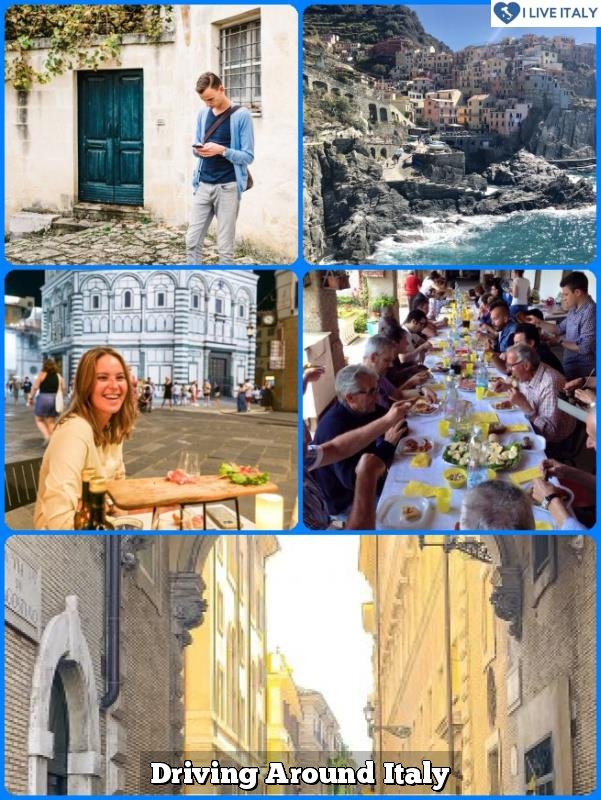Is it safe to travel driving in Italy? Italy is known for its stunning landscapes, picturesque villages, and historic cities, making it a popular destination for travelers. One of the best ways to explore the beauty of Italy is by driving, allowing you to discover hidden gems and create your own itinerary. But before hitting the road, it’s important to understand the safety regulations, road conditions, and driving culture in Italy to ensure a smooth and enjoyable journey.
When traveling in Italy by car, there are various factors to consider in order to ensure a safe and pleasant experience. From navigating through different road conditions to understanding Italian driving culture, being prepared is key to a successful trip. This article will guide you through all you need to know about driving in Italy and provide valuable tips for staying safe while exploring this beautiful country behind the wheel.
In this section, we will delve into the essential aspects of traveling by car in Italy. From safety regulations and road conditions to recommended driving routes and parking concerns, we will cover everything you need to know before embarking on your Italian road trip adventure. So sit back, fasten your seatbelt, and get ready for an unforgettable journey through one of Europe’s most charming countries.
Safety Regulations for Driving in Italy
Italy is a beautiful country with a rich history and stunning landscapes, making it an ideal destination for exploring by car. However, before embarking on a road trip in Italy, it is important to familiarize yourself with the safety regulations for driving in the country. Understanding the rules of the road will not only ensure your safety but also help you avoid potential fines or penalties.
Speed Limits and Seat Belt Laws
In Italy, speed limits can vary depending on the type of road and location. On highways, the maximum speed limit is typically 130 km/h, while on urban roads it is usually 50 km/h. It is crucial to adhere to these speed limits to avoid any run-ins with law enforcement. Additionally, all passengers in the vehicle are required to wear seat belts at all times.
Driving Licenses and Documentation
It is essential to have a valid driver’s license when driving in Italy. If you are visiting from another country, an international driving permit may also be necessary. In addition, make sure to carry your vehicle registration documents and proof of insurance at all times while driving in Italy.
Alcohol Consumption and Mobile Phone Use
The legal blood alcohol limit for drivers in Italy is 0.05%, which is lower than in many other countries. It is important to refrain from drinking alcohol before getting behind the wheel. Additionally, using a mobile phone while driving without a hands-free device is strictly prohibited.
By familiarizing yourself with these safety regulations and adhering to them while driving in Italy, you can ensure a safe and enjoyable road trip experience. Remember that respecting local traffic laws not only keeps you safe but also contributes to road safety for everyone traveling on Italian roads.
Road Conditions in Italy
When it comes to driving in Italy, it is essential to be aware of the various road conditions you may encounter during your journey. The country is known for its diverse landscapes, which can have an impact on the state of the roads. From smooth highways to narrow, winding roads through mountainous regions, drivers should be prepared for a variety of conditions.
One important factor to consider when driving in Italy is the presence of toll roads. The country has an extensive network of toll highways, known as “autostrade,” which provide efficient travel between major cities and regions. While these roads are generally well-maintained and offer a smooth driving experience, travelers should be prepared to pay for their use. Additionally, drivers should also be cautious when navigating through smaller towns and rural areas, where road maintenance may not be as consistent.
Another aspect to take into account is the prevalence of traffic congestion in larger cities such as Rome, Milan, and Naples. Italian cities are notorious for their heavy traffic, especially during peak hours. This can lead to delays and frustration for drivers, so it is advisable to plan your routes carefully and consider using public transportation within urban areas.
Overall, being mindful of the various road conditions when driving in Italy can enhance your travel experience and ensure a safe and enjoyable journey. By understanding what to expect on the road, travelers can make informed decisions about their routes and avoid potential challenges during their trip.
| Road Conditions | What to Expect |
|---|---|
| Toll Roads | Well-maintained but require payment for use |
| Traffic Congestion | Common in major cities; plan routes accordingly |
| Rural Areas | Potential for less consistent road maintenance |
Understanding Italian Driving Culture
When driving in Italy, it is important to understand the local driving culture in order to navigate the roads safely. One unique aspect of Italian driving culture is the aggressive and fast-paced nature of drivers. It is not uncommon for drivers to exceed speed limits and engage in bold maneuvers on the road.
Additionally, Italian drivers are known for their passionate and expressive communication while behind the wheel. It is common to hear honking horns and see hand gestures, but this is typically not a sign of aggression, but rather a way of communicating.
Another important aspect of Italian driving culture is the concept of “fare la dritta,” which translates to “make things straight.” This essentially means that when navigating narrow streets or tight parking spaces, Italian drivers expect each other to make room by moving their cars as close to the curb as possible. This may require some patience and confidence behind the wheel, as well as an understanding of this unwritten rule.
One key tip for navigating Italian roads is to be assertive yet cautious. While it may be intimidating at first, confidently maneuvering through traffic while maintaining awareness of your surroundings is essential. Understanding these cultural nuances will not only help you drive safely in Italy but also enhance your overall travel experience.
| Italian Driving Culture | Tips for Navigating Roads |
|---|---|
| Aggressive and fast-paced nature | Be assertive yet cautious |
| Expressive communication behind the wheel | Understand hand gestures and honking |
Safety Tips for Driving in Italy
Driving in Italy can be an exciting and convenient way to explore the country, but it’s important to prioritize safety while on the road. To help ensure a safe and enjoyable driving experience in Italy, keep the following tips in mind:
- Follow traffic laws: Familiarize yourself with Italian traffic regulations and adhere to speed limits, road signs, and right-of-way rules.
- Stay alert: Be vigilant while driving in Italy, as road conditions and traffic patterns may differ from what you’re accustomed to. Keep an eye out for erratic drivers and pedestrians.
- Avoid rush hours: Traffic congestion is common during peak commuting times in major cities, so plan your travel schedule accordingly to minimize time spent stuck in traffic.
It’s essential to remember that driving habits and customs can vary widely from place to place. What you’re used to might not always be the case when traveling abroad. The keyword “is it safe to travel driving Italy” serves as a reminder that being prepared and informed can significantly impact your safety on the road.
While navigating Italy’s picturesque landscapes behind the wheel can be exhilarating, it’s crucial to prioritize safety at all times. By being mindful of local driving practices, adhering to traffic laws, and staying alert on the road, travelers can enjoy a secure and memorable journey through Italy by car.
Recommended Driving Routes in Italy
Italy, known for its stunning landscapes, picturesque villages, and historic cities, is the perfect country to explore by car. The freedom to drive allows travelers to venture off the beaten path and discover hidden gems not accessible by public transportation. Here are some recommended driving routes in Italy that will take you to must-see destinations:
- The Amalfi Coast: This iconic stretch of coastline in southern Italy offers breathtaking views of the Mediterranean Sea, winding roads, and charming seaside towns like Positano and Ravello.
- Tuscany: A road trip through Tuscany is a journey through rolling hills, vineyards, and medieval hilltop towns such as San Gimignano and Montepulciano. Don’t miss the opportunity to visit the historic city of Florence along the way.
- Dolomites: For those who love alpine scenery, a drive through the Dolomites in northern Italy is a must. The mountain range offers spectacular landscapes, scenic drives, and outdoor activities like hiking and skiing.
Driving through these regions allows you to stop at your leisure to take in the sights, enjoy local cuisine, and immerse yourself in the beauty of Italy. However, it is important for travelers to be aware of safety regulations and road conditions before embarking on their journey.
When considering whether it is safe to travel by driving in Italy, it’s important for travelers to research driving routes that align with their preferences for scenery, attractions to visit along the way, and driving conditions. With proper preparation and awareness of safety regulations, driving in Italy can be a rewarding experience that allows visitors to fully appreciate the country’s diverse landscape and rich cultural heritage.
Parking and Security Concerns
Traveling by car in Italy offers a great deal of freedom and flexibility to explore the country’s beautiful landscapes and charming cities. However, it is important to consider parking and security concerns when traveling with a vehicle.
When it comes to parking in Italy, especially in popular tourist areas, finding a safe and secure spot for your vehicle can be challenging. It is advisable to research parking options ahead of time, whether it’s secure parking garages or designated parking areas recommended by local authorities. Additionally, be prepared to pay for parking in most cities and tourist areas.
To ensure the safety of your vehicle while traveling in Italy, there are several precautions you can take. It is recommended to avoid leaving any valuables inside the car, as car break-ins are not uncommon in certain areas. Keeping your vehicle locked at all times, even when parked, can help prevent theft or vandalism.
In addition to taking precautions with parking and security, travelers should also consider investing in comprehensive travel insurance that includes coverage for rental cars. This can provide additional peace of mind when navigating the roads and handling potential security concerns while driving in Italy. Ultimately, being proactive about parking and security measures can help ensure a safe and enjoyable driving experience in this stunning European country.
Public Transportation Options in Italy
Italy offers a well-developed public transportation system, making it easy to explore the country without the need for a car. Whether you prefer to travel by train, bus, or ferry, there are plenty of options for getting around in Italy.
Trains
Italy’s train network is extensive and connects major cities as well as smaller towns and villages. Traveling by train is not only convenient, but it also allows you to sit back and enjoy the stunning scenery as you make your way through the Italian countryside. It’s important to note that there are different types of trains in Italy, ranging from high-speed options to regional trains with frequent stops.
Buses
For destinations not easily accessible by train, buses are a reliable alternative. Bus services cover both short and long distances, and they often provide connections to more remote areas. Many tour operators also offer guided bus tours that take visitors to popular tourist attractions and off-the-beaten-path locations.
Ferries
If you plan on visiting the coastal regions of Italy or its many islands, ferries are a convenient mode of transportation. From the Amalfi Coast to Sicily to Sardinia, ferries can transport you to some of Italy’s most picturesque destinations.
Traveling around Italy using public transportation provides an opportunity to relax and take in the sights without the stress of driving in unfamiliar territory. It’s an eco-friendly option that also allows travelers to immerse themselves in Italian culture while mingling with locals during their journeys. So while driving in Italy can be an exciting adventure, exploring the country via public transportation is certainly a viable alternative for those looking for a more relaxed travel experience.
Conclusion
In conclusion, traveling by car in Italy offers a unique and flexible way to explore the country’s beautiful landscapes, historic towns, and charming villages. While it is an exciting prospect, ensuring safety on the road should be a top priority for any traveler. Understanding the safety regulations, road conditions, and driving culture in Italy is essential for a smooth and enjoyable journey.
It is important to familiarize yourself with the rules of the road in Italy before embarking on your journey. From speed limits and traffic signals to parking regulations, being aware of these regulations will help you navigate Italian roads safely and confidently. Additionally, understanding Italian driving culture can also contribute to a more pleasant experience on the road.
When considering whether it is safe to travel by car in Italy, it is crucial to stay informed and prepared. By following safety tips, being mindful of road conditions, securing your vehicle properly, and seeking alternative transportation options when necessary, you can have a safe and enjoyable driving experience in Italy. Ultimately, as long as travelers prioritize safety and plan accordingly, exploring Italy by car can be an enriching and unforgettable adventure.
Frequently Asked Questions
Is It Safe to Drive in Italy as a Tourist?
Driving in Italy as a tourist can be challenging due to the aggressive driving style, narrow roads, and complex traffic patterns. It’s important to be aware of local driving laws and customs to ensure safety.
Is a Road Trip Through Italy a Good Idea?
A road trip through Italy can be a fantastic way to explore the country at your own pace. From the picturesque countryside to the charming coastal towns, there’s so much to see and experience along the way.
Is It a Good Idea to Rent a Car in Italy?
Renting a car in Italy can offer flexibility and convenience, especially for exploring rural areas with limited public transportation. However, it’s important to familiarize yourself with Italian driving regulations and road signs before hitting the road.

I’m a passionate traveler, writer, and Italophile. My fascination with Italy’s history, art, and culture has led me on countless adventures across the Italian landscape. Through “I Live Italy,” I share my love for this extraordinary country and aims to inspire others to explore its boundless beauty.





